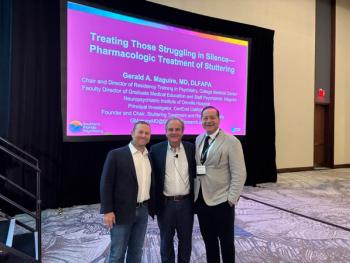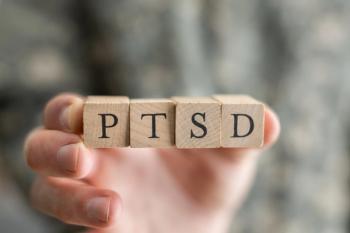
- Vol 40, Issue 10
Concurrent Treatment of Eating Disorders and PTSD Leads to Long-Term Recovery
Concurrent treatments targeting eating disorders and PTSD are needed to help these patients with complex conditions.
Research shows an undeniable connection between posttraumatic stress disorder (PTSD) and eating disorders (EDs). Individuals with significant traumatic histories and/or
Groundbreaking research published in the Journal of Eating Disorders shows the effectiveness of integrating trauma treatment with evidenced-based
PTSD in Higher Levels of ED Treatment
Research from the past few years indicates that PTSD is common in patients receiving higher levels of care. In 2020, we reported that nearly half (49%) of adults admitted to residential ED treatment met the criteria for PTSD,2 whereas results from an additional study from 2021 found that of 613 adults in residential treatment, 53% were reported to likely have PTSD based on PCL-5 >33.3 Furthermore, 35% of women in ED residential treatment also had PTSD, according to results from a 2021 study (
Individuals with EDs and comorbid PTSD experience more severe anxiety, depression, ED symptoms, and poorer quality of life compared with those without PTSD. Adults with EDs and PTSD had significantly higher scores than patients without PTSD on all measures, including total number of traumas on the Life Events Checklist (P < .001), global and all subscale scores on the Eating Disorder Examination Questionnaire (P < .001), depression scores on the Patient Health Questionnaire (P < .001), and scores on the Spielberger State-Trait Anxiety Inventory (state P < .001; trait P < .001).2
Additionally, research shows that PTSD is common among adolescents who are admitted to ED residential programs.
Sexual and gender minority individuals in ED treatment have significantly higher rates of PTSD compared with those who do not identify as
Outcomes With Concurrent Treatment
Using an integrated clinical approach based on principles of CPT and other evidence-based treatments, we studied outcomes at discharge and 6 months following discharge in 609 patients (96% female; mean age [+/- SD], 26.0 years [+/- 8.8 years]; 22% LGBTQ+) with and without PTSD. All patients improved significantly and retained improvements at follow-up compared with admission. However, all measured symptoms, including those of EDs,
Going beyond trauma-informed care by providing evidence-based trauma treatment results in better outcomes. We integrated CPT, 1 of 3 gold-standard PTSD treatment options, into comprehensive ED treatment based on cognitive behavioral therapy and dialectical behavior therapy.
Results from the study showed that 81% of patients with PTSD at admission had significant reductions in trauma symptom scores from admission to discharge and 73% of patients with PTSD at admission had significant reductions in scores from admission to follow-up 6 months later. Not only did patients achieve sustained improvements in ED symptoms, but they also gained significant, long-term relief from trauma symptoms after completing programming using an integrated, multimodal clinical approach. Postdischarge outcomes data show that not only treating patients’ mental health illnesses but also providing them with tools and coping skills to self-manage symptoms and maintain recovery can help patients get well and stay well longer.
Concluding Thoughts
There is growing consensus in the ED field that integrated, concurrent treatments targeting EDs and PTSD are needed to help these patients with complex conditions.2,4,7-10 The findings of this study conclude that concurrent, parallel, and interwoven approaches to treatment, one for the ED and one for PTSD, can be delivered during the same treatment course by the same providers and therapists. Integrated therapy techniques for PTSD and related disorders can be delivered successfully in residential treatment and are associated with lasting improvements 6 months after discharge (
Dr Perlman is chief medical officer at Monte Nido & Affiliates. She is double–board certified in psychiatry and addiction medicine and has trained in psychoanalytic psychotherapy. She is on the board of directors of the Eating Disorders Coalition, has served as vice president of the board from 2018 through 2022, and advocates in the US Congress regularly for increasing eating disorder education and access to treatment. Additionally, she oversees Monte Nido & Affiliates’ institutional review board–approved research study on clinical outcomes as coprincipal investigator and has coauthored several papers in peer-reviewed research journals on PTSD and EDs.
References
1. Brewerton TD, Gavidia I, Suro G, Perlman MM.
2. Brewerton TD, Perlman MM, Gavidia I, et al.
3. Scharff A, Ortiz SN, Forrest LN, Smith AR.
4. Rienecke RD, Blalock DV, Duffy A, et al.
5. Brewerton TD, Gavidia I, Suro G, Perlman MM.
6. Brewerton TD, Suro G, Gavidia I, Perlman MM.
7. Claudat K, Reilly EE, Convertino AD, et al.
8. Mitchell KS, Singh S, Hardin S, Thompson-Brenner H.
9. Trottier K, Monson CM.
10. Scharff A, Ortiz SN, Forrest LN, et al.
Articles in this issue
about 2 years ago
Examining Common—and Not-So-Common—Comorbiditiesabout 2 years ago
Sleight of Handabout 2 years ago
Patients Often Lack Choice Regarding Care Via Telehealthabout 2 years ago
Cannabis, Psychosis, and the Legal Implications: Chicken or Egg?about 2 years ago
You Have to Say Hello Before You Can Say GoodbyeNewsletter
Receive trusted psychiatric news, expert analysis, and clinical insights — subscribe today to support your practice and your patients.













